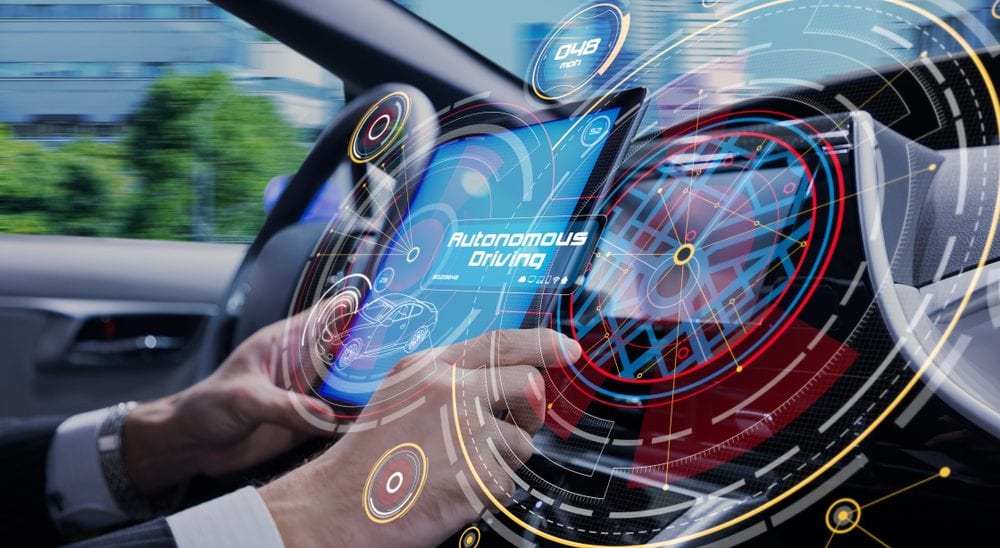How Augmented Reality Can Improve Efficiency in Transportation

The number of companies in the transport industry is increasing day by day which includes the technology of augmented and virtual reality to carry out their daily operations including
- Picking
- Inventory management
- For training their staff
- Offers new procedures
- Guides rarely performed errands
Numerous early models of AR and VR have given all their attention to the distribution center management and item picking, in any case, as the technology improves and the scope of items available builds, the use of this technology could go a lot further.
AR and VR in Transport Industries:
From the upgraded structure and assembling procedures to staff preparing and internship programs, the application of augmented reality (AR) and virtual reality (VR) in modern applications is developing. Many logistics and transport organizations are introducing AR technology in their transport operations, which is focused on increasing the use of the scope of new advances including 3D printing, AR, VR, etc.
Moreover, Skoda, for instance, has presented an inventive video planning plan in the Czech Republic with an end goal to help staff with material picking by giving expanded data and featuring any blunders.
AR focuses on high worker fulfillment because of more efficient performance by not using hands and by not having to go to different computer systems for records or to manually work on papers. This has decreased the number of unnecessary and pointless tasks.
The analysts also suggest that AR in logistics will grow over the coming years and, as we better see how to incorporate new and latest frameworks, those alternatives will grow new applications for fixing, supporting, and item improvement. According to reports, AR has sped up the logistics procedures by 15-35% relying upon existing effectiveness levels with just as almost zero blunders.
Smart Glasses
For instance, in the transport logistics area, various car-creators and supply chain managers have been researching the capability of innovation, including glasses or goggles that can overlay a heads-up show onto a normal view. Other than creative pilot projects, some are moving towards the foundation of AR frameworks in full activity. In transport logistics, AR has upgraded the manufacturing lessened the cost of the structure given a superior customer experience.
With regards to the use of AR in logistics applications, one of the leaders is BMW, which is at present using smart glasses in pilot ventures which are utilized like a screen worn on the face to show picking data in the labourer’s field of vision.
Test Projects:
Moreover, DHL carried out some intriguing pilot projects test results of smart picking and equipped pickers with smart glasses, which showed computerized picking records in their field of vision. Their job was to just move their eyes to see those rundowns on their smart glasses. Those savvy glasses saved them an important time. The products passing in front of the pickers are then guided to the right shelves. In this way, barcode scanning can be automated and the record can be entered in the WMS software without much effort.
Results:
- Productivity improved by 15%
- The number of mistakes fell by 40%
- Average picking efficiency increased by 25%
- The training time of workers falling by 50%
Vehicle Fixes:
There is one more useful application of Augmented Reality in transportation. Breakdowns are stressful with regard to time and cash. An AR gadget could give the driver essential guidelines to fix minor issues themselves. For example, with AR smart glasses, the driver can get a visual evaluation of the flaw and visual guidelines for what to do. Though it’s a temporary arrangement, yet one that could spare extensive expenses and a lot of time.
AR in Warehouse Operations:
Warehouse arranging procedures can likewise profit by Augmented Reality. For instance, warehouses are regularly utilized as storage and distribution points, where different services are performed. These services incorporate product assortment, marking, repacking, and fix. Space must be overhauled to oblige the exhibition of these errands.
This is the place AR comes in. It can help picture in full scale how new insides could function. As opposed to depending on scaled drawings, organizers can see changes set up and structure new work processes.
Completeness Checks
Typically, the pick-ups had to be checked manually or sometimes use a handheld gadget to examine standardized tags. A wearable gadget can quickly do the fulfillment checks. Scanners and 3D sensors could disclose to you the number of boxes or single packages or, using measurement gadgets to check dimensions.
AR and Last-Mile Conveyance
As per reports, the greatest driver is originating from online business, which has seen the B2C section outperform B2B. Therefore, client requests are presently reforming last-mile conveyance. Web-based business players for both B2C and B2B conveyances have referred to last-mile administrations which are the last steps in the supply chain. This acts as the key differentiator that impacts their progress. The reasons have to do with warehousing and customer satisfaction, and that is before you even get the chance to fuel vehicle, and work costs. AR can streamline last-mile conveyance and cut item costs, in this way expanding benefit.
Virtual Training
AR combined with smart glasses, tablets, and smartphones assists in carrying a great number of transportation activities. Be it time situations, AR arrangements can supplant, or better stated, digitize frameworks, and help to the kit. companies can utilize AR to convey their customers’ products with zero blunders.
Assisting Drivers
There are a lot of things that AR gadgets could do to support drivers. AR provides the drivers with the data they need about a specific bundle while still at the dispersion place. That data could disclose to them all that they need to know:
- Parcel’s weight
- The type of product
- Delivery address
- Instruction if any product requires uncommon care to prevent harm
- Ascertain the space required for packages at every step
- Park the vehicle in the ideal void space and show where the bundle ought to be put, in view of an enhanced course.
Less Harm
With the help of AR, there is smart stacking, which makes the procedure more productive and unloading quicker. AR could even decrease the number of packages that are harmed in the light as the driver who previously needed to put them on the ground or hold them, now just give voice guidance or basically motion with their head using AR gadgets.
Driver Route
Keeping drivers and their shipments progressing requires course improvement with continuous traffic information. Augmented Reality can make this simple, either with glasses or a windscreen showing helpful data in the driver’s field of vision. This is viably the advancement of GPS/Sat Nav.
Finding Destinations
Buildings and passageways are confusing or darkened sometimes. The driver can use an AR gadget at a building and in a split second get data, for example, Google Street View. The AR gadget could even form its database to make it simpler on different drivers who can depend on that data.
The AR gadget could even form its own database to make it simpler on different drivers who can depend on that data. It could even assist with the indoor route, where even the GPS and many navigation sites can’t detect any obstructions.
Cargo Loading
Nowadays, information and arranging for the program is a piece of the stacking procedure. Content, weight, size, goal, and additionally preparing for everything are for the most part issues to consider. In spite of these advances, the robbery is generally the stacking itself. Where Augmented Reality can have any kind of effect is by supplanting the printed payload records and burden directions. At a depot, for instance, the loader could get ongoing data on their AR gadget about which cargo to take straightaway and where precisely to put this bed in the vehicle. The key preferred position here is that current paper-based records are static, while AR-supported freight records take into consideration continuous changes, which rates up the whole procedure.
Global Trade
With developing countries, the economies are seeing the transportation of products all over the world with distinctive exchange guidelines and necessities. Here once more, AR could offer a proficient answer to encourage global exchange by guaranteeing that shipments be that cargo or air freight follow the pertinent import and complete guidelines, and that exchange documentation is as it ought to be.
